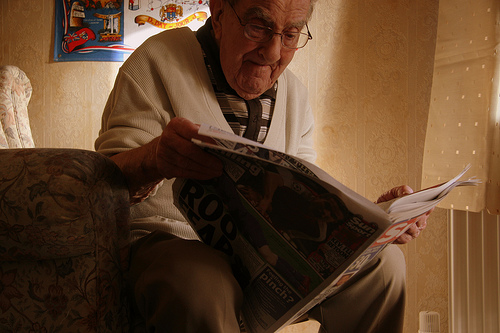Editor’s Note: Semil Shah works on product for Swell, is a TechCrunch columnist, and an investor. He blogs at Haywire, and you can follow him on Twitter at @semil.
In the world of mobile apps, the biggest news from this week was the announcement, by Facebook, of a new app, built by the social network, to read news and stories: Paper. Make sure to watch the video, which is very Apple-esque in its elegance and emotion. When Facebook announces these kind of apps, it evokes memories of their previous attempts to build and distribute standalone apps that unbundle one of its features, such as Camera, Poke, or Messenger. The initial reaction within the technology startup community has been a mix of skepticism and excitement, with some drooling over the new design (it does look good) while others lament its a copy (some interactions do look like Flipboard).
This all begs a question: Will Paper go the way of Poke, or the way of Messenger? The answer will have big consequences for Facebook.
On mobile devices, Messenger has been successfully unbundled from Facebook. Messenger is one of the top messaging apps out there, it works great, and even today, Facebook is so focused on making sure everyone has it on their phones that they actually route users who are inside Facebook’s main app entirely out to Messenger (and then back in) to coax the behavior of using Messenger itself. With Poke, as we all can recall, even Facebook wasn’t able to use its enormous, engaged mobile user base to turn it into a real experience to rival Snapchat. This episode was a highly visible example of how Facebook’s high mobile engagement could shoot any app right to the top of the charts, but also exposed the limits of its power to affect mobile engagement as users quickly abandoned the product experience.
When it comes to Facebook and mobile, we are witnessing the early stages of the company’s attempt to unbundle and distribute its core features in new mobile products. Back in September 2011, I wrote a column right here on TechCrunch which argued Facebook’s strategy for blanketing our devices with their software was to break it up. You can read that post here, and make sure to check out the picture. Two and a half years later, Facebook is in a much stronger mobile position. Earlier this week for earnings, Facebook shared mobile stats, reporting nearly 950m MAUs and 550m DAU’s. This type of scale and engagement for mobile apps affords Facebook incredible amounts of actionable data, which translates to market power, which they use to line their pockets through mobile app install ads — just wait until they roll out mobile re-engagement ads and deep-linking options, as well.
Can Facebook, moving forward, effectively leverage the power and scale of its own network to drive its daily active users to new mobile experiences (as they’re doing with Messenger), or will users only temporarily flock to only to abandon them (as they did with Poke)? And, in the case of Paper specifically, will users convert to getting real-time mobile push notifications about news and stories about their friends, or will they find this spammy and revert back to their original sources of news (which includes regular Facebook)?
It will be interesting to see the world’s reaction tomorrow (February 3) when Paper is released. Two great pieces on this are by TechCrunch’s own Josh Constine, who takes a deep dive on Facebook’s Plot To Conquer Mobile: Shatter Itself Into Pieces, and Wanelo’s Adam Besvinick, who looks beyond the motive to unbundle when it comes to Paper. Facebook is a very different mobile company today than it was a year ago, or two years ago. The scale is just massive, and the engagement is off the charts. Assuming the product experience itself is relevant, which is why news and personal stories are interesting, even a low conversion rate to Paper would be a very sizeable audience. The reason we see more and more news apps on our phones or in the App Store is because checking the news isn’t just a daily active use case, it’s a multiple-times-a-day hyperactive use case, and one that Facebook, with their mobile user data, their algorithms, and their scale and engagement, could exploit with this move and be the first thing people read in the morning — just like the newspaper used to be. Only time will tell, so pick up the Paper tomorrow morning and read all about it.
Photo Credit: Je suis Samuel / Creative Commons Flickr
